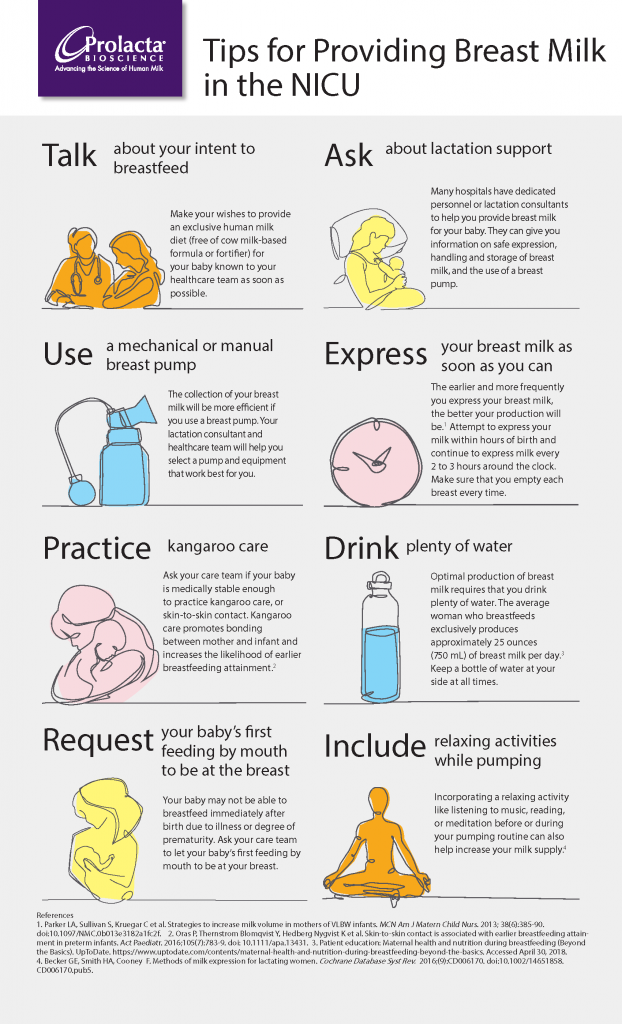Blog
Infographic: Providing breastmilk in the NICU

- Talk about your intent to breastfeed: Make your wishes for a breast-milk-only diet (free of cow-milk based formula or fortifier) for your baby as soon as possible to your healthcare team.
- Ask about lactation support: Many hospitals have dedicated personnel or lactation consultants, to help you provide breastmilk for your baby. They also provide information on safe expression, handling and storage of breast milk, along with the use of a breast pump.
- Use a mechanical or manual breast pump: The collection of your breastmilk will be more efficient with the use of a breast pump. Your lactation consultant and healthcare team will help you select a pump and equipment that works best for you.
- Express your breastmilk as soon as you can: Studies show that the earlier and more frequently you express your breastmilk, the better your production will be.1
- Attempt to express your milk within hours of birth and continue to express milk every 2 to 3 hours around the clock. Make sure that you empty each breast every time.
- Practice kangaroo care: Ask your care team if your baby is medically stable enough to practice skin-to-skin contact. Kangaroo care has many benefits, including regulating your baby’s heart rate and temperature and increasing the likelihood of successful breastfeeding.2
- Drink plenty of water: Optimal production of breastmilk requires that you drink plenty of water. The average woman who breastfeeds exclusively produces approximately 25 ounces (750 mL) of breast milk per day.3Keep a bottle of water at your side at all times.
- Request your baby's first feeding by mouth be at the breast: Your baby many not be able to breastfeed immediately after birth due to illness or degree of prematurity. Ask your care team to let your baby’s first feeding by mouth by at your breast.
- Include relaxing activities: Incorporating a relaxing activity like listening to music, reading, or meditation before or during your pumping routine can also help increase your milk supply.4
References
- Collins C, Maria M, Jennifer G, et al. Avoidance of bottles during the establishment of breast feeds in preterm infants. Cochrane Database Syst Rev. 2016;(10):CD00525.
- Fugate K, Hernandez I, Ashmeade T. Improving human milk and breastfeeding practices in the NICU. J Obstet Gynecol Neonatal Nurs. 2015;44(3):426-38. doi:10.1111/1552-6909.12563
- Patient education: Maternal health and nutrition during breastfeeding (Beyond the Basics). UpToDate.https://www.uptodate.com/contents/maternal-health-and-nutrition-during-breastfeeding-beyond-the-basics. Accessed April 30, 2018.
- Becker GE, Smith HA, Cooney F. Methods of milk expression for lactating women. Cochrane Database Syst Rev. 2016;(9):CD006170. doi:10.1002/14651858.CD006170.pub5
